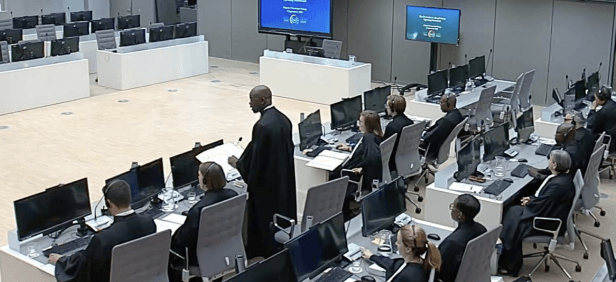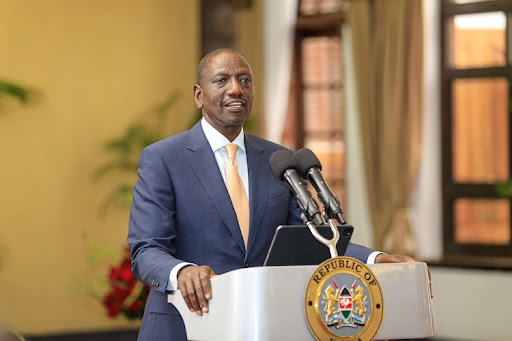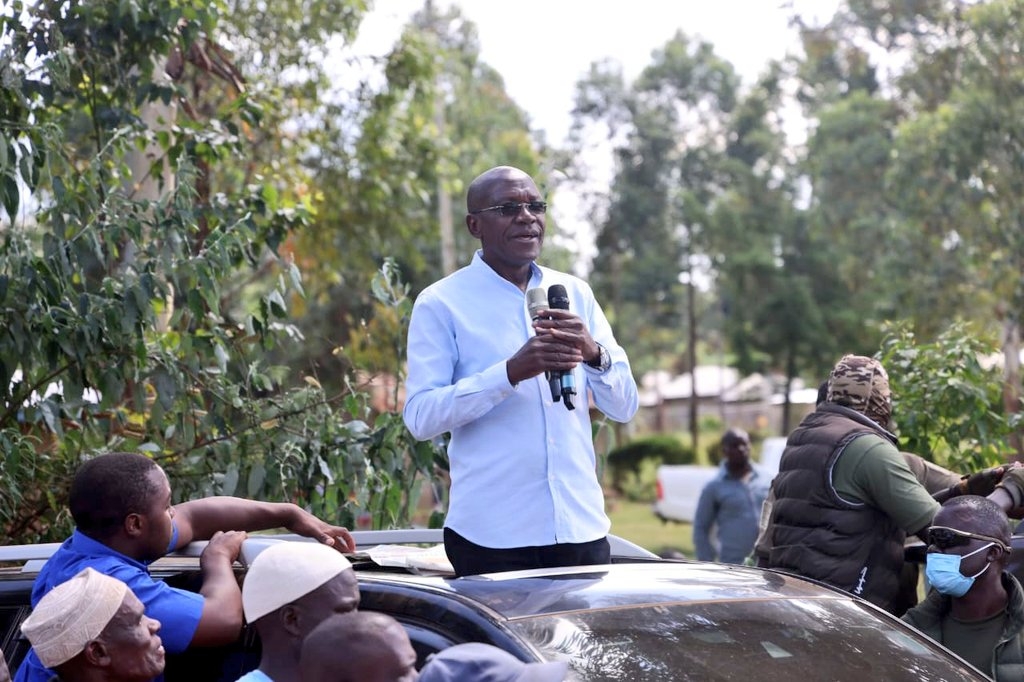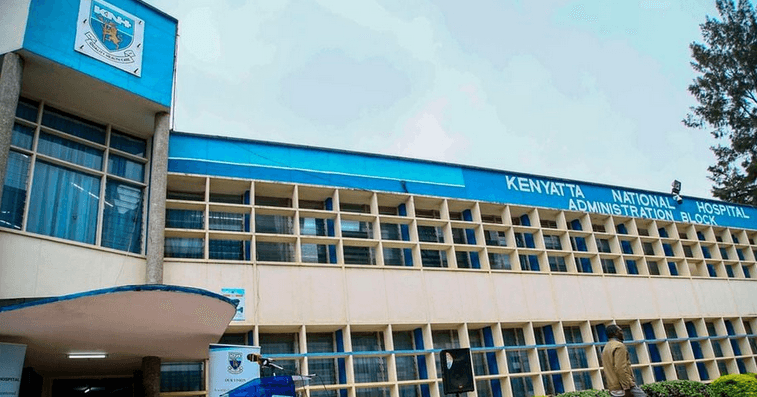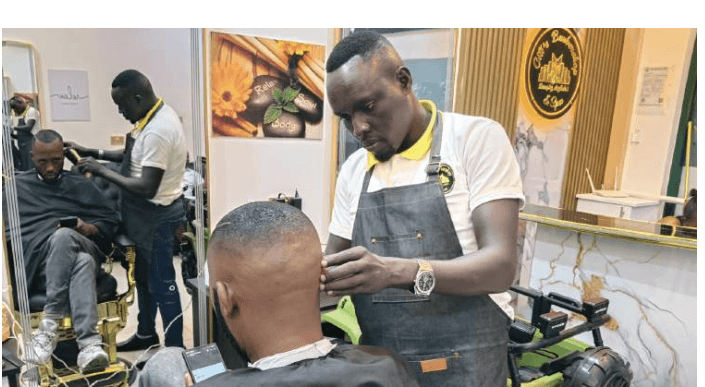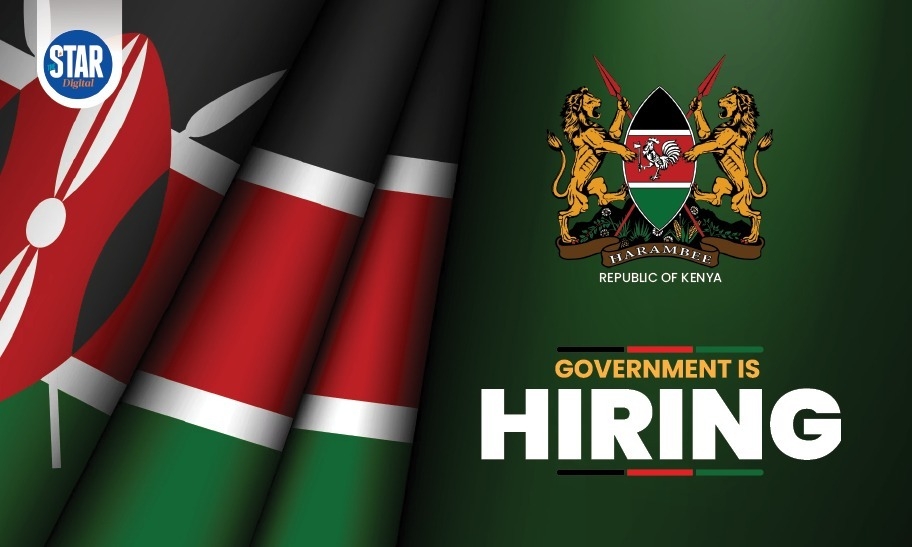In the early years of the last decade, 2009 to 2014, illegal wildlife trade skyrocketed, leaving conservationists and governments worried about the future of elephants and rhinos.
Around the same time, militia group al Shabaab waged a terror war in Kenya, and there were rumours that the group was behind the wildlife killings, with the proceeds funding their bloody campaign. This has never been confirmed, but we caught up with a former commander of a poaching gang in Northern Kenya, who says his gang received tactical training, finance and arms from al Shabaab.
Around the end of November 2013, a group of well-armed and trained poachers linked to an international criminal network behind smuggling of illegal wildlife products invaded the well-protected Lewa conservancy with the sole aim of killing rhinos.
The daring attack indicated the well-resourced and equipped poachers were different from ordinary poachers, who were associated with bushmeat trade or small-scale poaching activities.
Population explosion around the Upper Eastern region, which is also the biggest wildlife ecosystem with national parks, conservancies and wildlife corridors, created an easy market and demand for bushmeat trade, thus handing a lifeline to normal armed bandits-cum-poachers.
But the Lewa conservancy attack was a sophisticated one as all the 15 armed and well-trained bandits were armed with sophisticated weapons, including AK47 and M16 guns.
The group also used night vision goggles and a navigation system that showed them positions and direction within the expansive Lewa Conservancy. This made their work easy and smooth and helped them avoid interception from hundreds of well-trained and resourced Lewa conservancy rangers.
Abdi Gufu, a former commander with the Kinna poaching brigade, says the group of armed bandits behind the Lewa Conservancy attack, which targeted the rhino sanctuary, was planned for two months before the actual raid.
The poacher were after a pregnant rhino, and the group had collected enough intelligence from a rogue ranger, who aided them with information on rangers’ patrols and movement.
HOW GROUP STARTED
The attack was risky as it came at a time when there were increased cases of extrajudicial killings of poachers and any other persons facilitating and organising poaching.
Gufu, who is wanted by the security authorities for running an elaborate poaching scheme, decided to divulge his past activities, illegal dealings and how he formed and navigated the poaching group.
From his hideout, he claimed that all his poaching ring members have fled Isiolo and are either hiding around the country or have relocated to Ethiopia.
“Our group held various meetings for two good months and in various locations and different counties. The planning took us to Nanyuki, Meru, Nyeri and Thika, and one golden rule was every member to leave their mobile phone at home,” Gufu said.
The planning meeting was not a normal attack plan mooted by local bandits. The group received support from well-heeled and connected criminals associated with an international smuggling network.
Gufu says all the 2013 Lewa rhino sanctuary attack meetings were sponsored by Fredrick Muchina, a notorious illegal wildlife products smuggler with links to the Far East Asia market. Muchina was later shot dead in 2017 in Ruiru town, Nyeri county. He had been linked to various poaching rings in Kenya and neighbouring countries.
“I remember meeting Muchina on several occasions between 2010 and 2015, and he played a key role in building the capacity of my fellow bandits from Kinna,” Gufu said.
“When we got a lot of arms from some Somali-speaking customers and business links from Muchina, our group was profiled by state security agencies and given an operation name, Kinna Brigade.
The brigade was formed in 2007 by Abdi Gufu and another member, Mahamud Abdullahi. It group attracted poor and desolate youths from Kinna town, who joined the group in conducting small-scale poaching activities and also targeting vehicles plying the Meru-Kinna-Garbatula road.
The group used to target Miraa caravans ferrying mild leafy stimulants from Meru to Northern Kenya towns via Kinna town, and they used to collect protection fees from each caravan to sustain their criminal group.
RIGOROUS TRAINING
Around 2009, Gufu received a call from someone speaking in Borana language, requesting a business meeting in either Maua or Isiolo town.
During the meeting, which took place in Maua town, the caller came with two other guests who were speaking Somali, and they identified themselves as international miraa traders in Kenya and Somalia.
The group told Gufu they were aware of his poaching work in areas near Meru and Isiolo, and asked him if he was ready to supply them with elephant tusks, rhino horns and pangolin scales.
Gufu told them his banditry group was undertaking bushmeat business and transportation of elephants’ tusks for some traders based in Kinna to other areas like Isiolo at a fee, and asked the group for financial as well as arms support.
The traders agreed to meet his request after doing due diligence, on condition that he forms a lean group of youths from his area, whom he could control and trust.
The three-hour Maua meeting ended with the group handing Gufu Sh20,000 and promising to contact him later.
“They promise was they would call after one month. But they called me after two weeks for another meeting, in which they asked me to look for strong and brave youths from my area for recruitment,” Gufu said.
“They wanted 50 youths and I submitted the names to the Borana-speaking trader. After one week, I was summoned to Nairobi’s River Road area, where I met the Somali and the Borana-speaking traders, and they gave me the operation plan.”
The plan entailed moving the recruited bandits from Kinna to remote training areas in Tana River county, where they would receive training and skill transfers to undertake poaching for the Somali traders.
Around May 2009, Abdi sent the first 10 recruited youthful poachers to Tana River training bases through Escort area in Garissa. Another 30 recruits went through Nairobi, and the final batch of 10 went through Maua, Embu and Kanyonyo.
The training, which took four months, involved Somali-speaking trainers, who trained the poachers on tactical operations, surveillance, intelligence gathering capabilities, navigation training and how to penetrate the wildlife security systems.
After the training, the group returned to Kinna town, where they undertook special poaching operations that caused concerns within circles of the Kenyan wildlife authority and security agencies.
It’s during the training that the poacher’s leader Gufu suspected that the traders and the trainers were from al Shabaab operating in Tana River county, which is close to Somalia.
“The complex and sophisticated training made me and other trainees to suspect this was not a normal criminal group,” he said.
“Also, the flow of trainers from undisclosed areas and specialised training tactics, like snatching of weapons from wildlife and other security officials and using the same weapons against them, and how to escape from lawful custody.”
NEW CONNECTION
After returning to Kinna town, the poaching brigade made some strides by killing elephants in Isiolo and Samburu game sanctuaries, and they managed to hand over 10 tusks to a new batch of Somali traders stationed in Isiolo town.
“We got sophisticated weapons after delivering first 10 tusks, and the new Somali traders warmed to our group and started offering us assistance. The assistance included cash movement and any other material support we needed to do our work,” Gufu said.
However, of concern to Gufu was the absence of the Borana trader who introduced him to the Somali traders, and he kept asking and searching for him.
It was in March 2010 that Gufu was approached by an Isiolo-based broker who wanted to introduce him to new business opportunity and network based in Kenya.
The broker told Gufu he was the one who informed the first Somali traders about Gufu's poaching group in Kinna and their potential in undertaking large-scale poaching if given support.
He wanted to introduce to him to a new customer also linked to the Somali traders, and he was aware of the training and skills development the Kinna poaching brigade received from Tana River, and the successful poaching works they had undertaken.
“I believed him because he gave all the telephone numbers of the callers who called me during the first Maua meeting and subsequent ones,” Gufu said.
“He also mentioned the total amount of money I had received from the Somali traders and even the type of clothes I was wearing during the meeting session.”
For Gufu to ensure the broker was not an informant sent by Kenya Wildlife Service to get more information on the group, he consulted the new Somali traders on requests made to him by the broker.
The Somali traders said they knew the broker. They said he was a good man and, thus, he should cooperate with him.
It’s after the approval that Gufu engaged the broker, who in turn introduced him to Muchina, who became the second main customer of the Kinna poaching brigade.
The first meeting between Gufu and Muchina, which was facilitated by the broker, took place inside a curio shop outside Isiolo town.
Muchina asked Gufu basic questions, like how many rhino horns and elephant tusks his poaching brigade could deliver on a monthly basis, and how the group could target wildlife ranches, sanctuaries and conservancies outside Isiolo and Samburu ecosystems.
“It was a 20-minute meeting, and he was talking to me while pretending he was selecting curio products. The broker later told me Muchina was a key trader in illegal wildlife products, and he was on the radar of security agencies, hence his organising such a meeting in a curio shop,” Gufu said.
Two months after the curio meeting and after building a strong rapport with Gufu, the broker disclosed the whereabouts of the Borana trader who introduced Gufu to the first Somali traders.
“He told me the Borana trader was a former religious teacher who works closely with the Somalia-based militant group al Shabaab, and he played a key role in recruiting Isiolo youths to join the group,” Gufu said.
“The sheikh was transferred to Somalia to undertake other activities after authorities took note of increased radicalisation and recruitment cases in Isiolo then.
“They took him away and brought another unidentified person. That is the time I realised we were working with al Shabaab and receiving support and training skills from them in undertaking poaching activities.”
All our raids and operations were backed with information and facilitation we received from friendly wildlife rangers
COLLUSION WITH RANGERS
Before the discreet planning meetings for the Lewa attack, the Kinna brigade poachers’ group were ahead of their poaching colleagues. Their presence was felt in all wildlife sanctuaries and protected wildlife zones, right from Samburu, Laikipia, Meru, Isiolo to Tana River county.
The group controlled poaching activities, transportation of illegal wildlife products, conducting surveillance in their areas of operation and also undertaking intelligence missions and collecting information on the movement of KWS and conservancy rangers.
The group also established a unit that was charged with targeting loose and desperate wildlife rangers and luring them into their poaching scheme with the promise of big and handsome cash payouts.
Gufu said the unit charged with recruiting rangers had access to lots of cash and gifts. The minimum they gave each wildlife ranger was Sh100,000 as recruitment fees, Sh50,000 as monthly fees and Sh10,000 as communication and bonding fees.
Once the Kinna brigade made a successful poaching mission in areas where they lured wildlife rangers or rangers, each “friendly” ranger received a lump sum of Sh100,000 for products like elephant tusks and other illegal products and Sh500,000 for rhino horns.
“All our raids and operations were backed with information and facilitation we received from friendly wildlife rangers,” Gufu said.
“We didn’t do guesswork. We relied on maps, advice from experts and advisers, and several meetings were held before any attacks to ensure nobody was nabbed.”
Theoretically, ivory generates significant financial rewards, so that could finance violence or many other things
Chris Brown, the project lead for Saving Elephants through Education and Justice (SEEJ-AFRICA), says ground-level poachers are simply motivated by financial reward, normally between Sh10,000 and Sh20,000 per kilo of ivory.
“Theoretically, ivory generates significant financial rewards, so that could finance violence or many other things,” Brown said.
SEEJ Africa, a continental organisation that specialises in monitoring court cases involving wildlife crime, is following 88 cases in different Kenyan courts.
“Typically, the average case get a conviction, but any case that involves big players, large amounts of ivory or has some transnational connection goes down the toilet,” Brown said.
The Kinna poaching brigade also conducted extensive intelligence-gathering schemes targeting families of wildlife rangers.
The aim was to harm those of friendly wildlife officials if they decided to betray the cause and expose the network, and to harm those of non-cooperative senior officials as a retaliatory measures in case they undertook a big operation against the Kinna poaching brigade.
Much has gone into building the capacity of Kenya Wildlife Service rangers. Many stakeholders, such as African Wildlife Foundation, have offered support.
AWF Counter Wildlife Trafficking director Didi Wamukoya said the group helps in reviewing the curriculum of KWS law enforcement academy to ensure the training content addresses the current challenges in the field.
“AWF supports KWS to ensure training, mentorship and capacity building of its rangers and also educates judicial officers, prosecutors and other partners on wildlife crime and laws,” he said.
They are searching for me and others, and I want to tell my story before they get me. Their mission is to kill wanted high-value poachers like me, and it's important I tell the world my involvement in illegal wildlife trade
MISSION ACCOMPLISHED
Back to Lewa conservancy, the raiders, led by Gufu, managed to stage a flash attack, where only 30 bullets were sprayed, and they removed the horn from the pregnant rhino with precision.
“It was well planned and executed. We had several coordinating teams each with its role and execution plan. We had an attack team, transport team, dehorning team, rescue team and general security team to intervene and offer rapid reinforcement support,” Gufu said.
The horn from the pregnant rhino was smuggled to Nyeri using an ambulance the group hired from Isiolo to evade any security interception or search along the busy transport route.
“The ambulance used to carry the rhino horn also carried a fake patient with all medical referral papers from Isiolo Hospital, and by doing so, no security authority could suspect foul play or suspicious activity.”
KWS says the trend in historical poaching of elephants and rhinos has declined, but the fight against poaching remains a complex and evolving challenge.
Senior assistant director in charge of conservation education Catherine Wambani cited international crimes, global demand for illegal wildlife products, economic conditions and regional stability as factors complicating their efforts.
“Historically, poaching has affected species like elephants and rhinoceroses, primary driven by the illegal trade in ivory and rhino horns,” she said.
“The Kenya government, conservation organisations, and law enforcement agencies have implemented various measures to combat poaching and protect wildlife.”
The Kinna poaching brigade headed by Abdi Gufu is no more as most of its members were victims of waves of extrajudicial killings and forceful disappearances that targeted poaching networks and its enablers in northern Kenya.
“We lost 20 members who were picked from Kinna town and its surrounding areas, while others were picked from Isiolo and Nanyuki town,” Gufu said.
“Personally, I escaped two security dragnets laid by multi-agency forces to arrest me. I decided to flee for my safety.”
The remaining members of the Kinna brigade who are on the run within the vast Isiolo county are believed to be involved in facilitating and offering protection to human trafficking convoys moving from Ethiopia through Marsabit and Isiolo counties to Nairobi city, where they are smuggled to South Africa.
Halkano Guracha, a resident of Charri-Cherab village in Isiolo county, said the former poachers are roaming the desolate dry borderland village of Charri, which is used by traffickers to smuggle Ethiopians to other Kenyan towns.
“They are on the run and the only criminal enterprise available for them is to facilitate and escort human trafficking convoys passing through part of Charri village. They are desperate and lack the huge resources they used to make from poaching activities,” Halkano said.
Gufu said the multi-agency security team in northern Kenya is targeting key individuals behind the poaching cases in Isiolo, Samburu and Marsabit, and he is among those who are sought by the authority.
“They are looking for the key people who were operating the poaching gangs like me,” he said.
“I have information they are looking for 20 key guys who are on the run. The authorities' fear is the key guys can emerge again and establish new poaching brigades.”
Gufu said he is speaking and giving side of his story because he knows he is a wanted high-value poacher and he might be killed through extrajudicial means, hence him spilling the beans.
“They are searching for me and others, and I want to tell my story before they get me. Their mission is to kill wanted high-value poachers like me, and it's important I tell the world my involvement in illegal wildlife trade,” he said.
This story was produced with support from Internews Earth Journalism Network.


